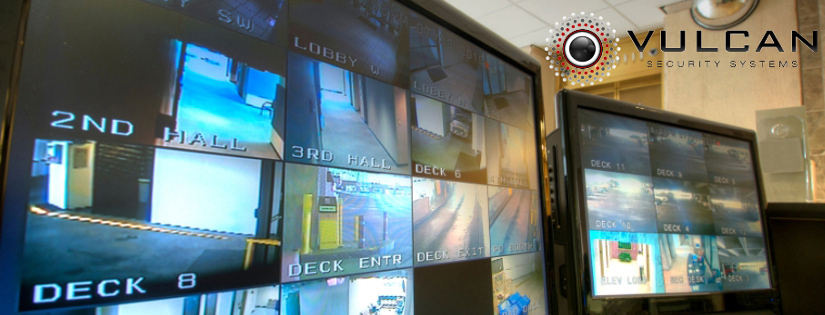Opportunities abound in the typical U.S. workplace for accidents and injuries.
Sometimes these injuries are due to the nature of the work itself or the speed at which work must be performed.
Sometimes workplace risks are due to the lack of safety protocols (or the failure to enforce announced safety protocols), poor operational design, defective machinery configuration, or just simply fatigue that comes from repetitive tasks and/or intense work situations.
As we move toward Labor Day, Vulcan Security Systems will be winding up the multi-part series on video surveillance in the workplace with three articles that take a look at employee safety and how video security and related technologies can improve safety and boost morale in the workplace (and improve your bottom line, too).
In a nutshell, better safety practices should lead to fewer workers comp claims, fewer OSHA penalties, improved productivity since fewer workers will be out for injuries, possibly lower liability insurance premiums, and improved morale when the employee feels safer while at work and when leaving the campus.
Video Surveillance to Improve Safety in Industrial Operations
According to the results of a survey released in August 2017, “nearly three-fourths of American workers report either intense or repetitive physical exertion on the job at least a quarter of the time.”
The results also found that two-thirds of Americans “frequently work at high speeds or under tight deadlines, and one in four perceives that they have too little time to do their job. More than one-half of Americans report exposure to unpleasant and potentially hazardous working conditions.”
The use of video security cameras and footage to monitor operations can lead to a better understanding of where speed may play a factor in fatigue, boredom or unsafe practices. If you can detect the cause of the problem, your operations engineers can develop a solution.
The video footage can also be used to identify areas where more safety or operations training is needed and whether existing safety protocols are being followed. If not, the appropriate training or disciplinary actions can be imposed.
The study referenced above was conducted by researchers at RAND Corporation, Harvard Medical School and UCLA using data collected in 2015 as part of the American Conditions Working Survey of 3,066 working adults selected using statistically-representative computer sampling.
The full report for Working Conditions in the United States (2015 Survey Data) is available for free here: https://www.rand.org/pubs/research_reports/RR2014.html
For more information on this topic, visit the first post in this series on injuries in the workplace and how video security monitoring can help.
Video Security Footage and OSHA Compliance
Many business owners may look at OSHA as an enemy who’s simply looking to regulate your business out of existence. The reality is that occupational hazards do exist and employees deserve a work environment where they are not exposed to unnecessary risks.
Smart business owners (and chief compliance officers) know that good safety practices actually save money in the long run, by reducing the cost of injuries and time off.
Video surveillance cameras can help you monitor for compliance with safety rules and demonstrate compliance in the event of an accident where compliance is in question. Of course, the footage can be used against a non-compliant employer but most reputable employers want to provide a safe working environment.
We assume your business wants to offer a safe workplace and any OSHA non-compliance would be unintentional.
A look at recent fines and sanctions imposed in the past year by OSHA across Region 4 (which includes Alabama) reveals numerous safety violations that could have been avoided through proactive monitoring of key machinery, work areas, and operations.
Missing machine guards and missing safety devices on machinery are among the most prevalent serious violations found in 2016 and 2017 OSHA citations. A review of video surveillance could reveal whether the guards were intentionally removed and allow management to replace.
Inadequate working space around electrical equipment and other particularly hazardous areas could also be identified using video surveillance footage. Insufficient work-space in confined areas is another common basis for OSHA fines.
Read news releases from OSHA Region 4 here: https://www.osha.gov/news/newsreleases/region4
Proactive Safety and Compliance Offers Value Video Monitoring
Proactive safety and compliance offers should easily recognize the value of security video technology to identify process improvements and where better safety training is needed.
Safety and HR officers often request video security systems for work areas and are one of the main drivers for new installations and retrofits and upgrades of early-generation video security cameras.
Contact Vulcan Security Systems in Birmingham today for your free needs assessment. We serve manufacturers, warehouse operations, mines and other industrial clients throughout north and central Alabama.
The next blog post will take a look at safety and hazardous working conditions from the standpoint of disgruntled and former employees. After that we’ll close our our series with a look at how employee morale and personnel recruitment can benefit from the proactive use of monitored video security cameras.


